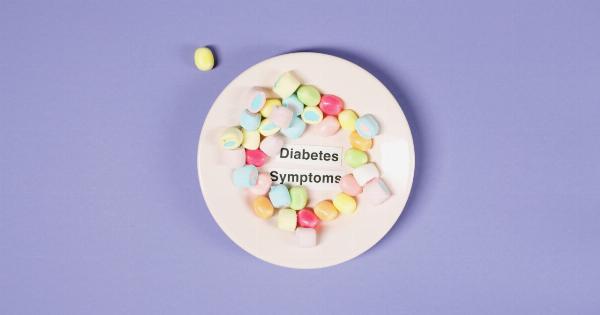In recent years, the prevalence of obesity and its associated health problems have been on the rise. Among the many health conditions associated with obesity, one that often goes unrecognized is obstructive sleep apnea (OSA).
Obstructive sleep apnea is a sleep disorder characterized by repetitive partial or complete closures of the upper airway during sleep, leading to disrupted breathing patterns and poor sleep quality. Several studies have established a strong link between obesity and obstructive sleep apnea, highlighting the need for awareness, early intervention, and effective management of both conditions.
The Physiology of Obstructive Sleep Apnea
Before delving into the relationship between obesity and obstructive sleep apnea, it is essential to understand the underlying physiology of the sleep disorder. During sleep, the muscles in the upper airway relax, causing the airway to become narrower.
In individuals with obstructive sleep apnea, this relaxation is excessive, leading to a complete or partial closure of the airway. The closure restricts the airflow and decreases the oxygen saturation in the blood, triggering brief awakenings to reopen the airway.
These repetitive awakenings disrupt the normal sleep cycle, preventing the individual from reaching restorative stages of sleep.
Obesity as a Risk Factor for Obstructive Sleep Apnea
Obesity has long been recognized as a significant risk factor for the development and progression of obstructive sleep apnea.
Excess body weight, especially around the neck and throat area, contributes to the narrowing of the upper airway, making it more susceptible to collapse during sleep. The accumulation of fat tissue in the region surrounding the airway creates additional pressure, further compromising its patency.
Hormonal and metabolic changes associated with obesity also play a role in the development of obstructive sleep apnea.
Adipose tissue, particularly visceral fat, releases various inflammatory substances and adipokines that can affect the functioning of the upper airway and respiratory control centers in the brain. These changes promote airway inflammation, impair muscle tone, and disrupt the normal regulation of breathing, all of which contribute to the development of obstructive sleep apnea.
Impact of Obstructive Sleep Apnea on Obesity
The impact of obstructive sleep apnea extends beyond its association with obesity. Sleep apnea can perpetuate a vicious cycle by further exacerbating weight gain and the associated health complications.
The disrupted sleep patterns in individuals with obstructive sleep apnea can lead to excessive daytime sleepiness and fatigue, decreasing their motivation and energy levels for physical activity. Furthermore, the chronic sleep deprivation and poor sleep quality disrupt the normal hormonal regulation of appetite, leading to increased cravings for high-calorie foods and altered metabolism.
Moreover, untreated obstructive sleep apnea can lead to metabolic dysfunction, including insulin resistance and impaired glucose tolerance, contributing to the development or worsening of obesity.
The physiological stress imposed by recurrent nocturnal hypoxemia and fragmented sleep patterns can alter metabolic pathways and promote a state of chronic inflammation, further exacerbating obesity and its associated metabolic complications.
Screening and Diagnosis of Obstructive Sleep Apnea
Given the strong association between obesity and obstructive sleep apnea, it is crucial to identify individuals at risk and ensure timely diagnosis and treatment.
Physicians often employ various screening tools, such as the STOP-BANG questionnaire, to assess the likelihood of obstructive sleep apnea in obese individuals. The questionnaire evaluates factors such as snoring, tiredness, observed apneas, high blood pressure, body mass index (BMI), age, neck circumference, and gender.
Individuals deemed high risk based on the screening questionnaire are typically referred for a comprehensive sleep study, called polysomnography, to confirm the diagnosis.
Polysomnography involves monitoring various physiological parameters, including brain waves, eye movements, heart rate, breathing patterns, and oxygen levels during sleep to identify the presence and severity of obstructive sleep apnea.
Treatment Approaches for Obesity and Obstructive Sleep Apnea
Addressing obesity is a fundamental aspect of managing obstructive sleep apnea.
Weight loss interventions, including lifestyle modifications, dietary changes, and increased physical activity, form the cornerstone of treatment for obese individuals with sleep apnea. Even a modest weight loss of 10% has been shown to significantly improve the severity of obstructive sleep apnea and its associated symptoms.
In severe cases, where conservative measures alone do not suffice, bariatric surgery may be considered as an option for weight reduction.
Bariatric procedures, such as gastric bypass or sleeve gastrectomy, not only lead to substantial weight loss but also improve or resolve comorbid conditions such as obstructive sleep apnea.
In addition to weight management, continuous positive airway pressure (CPAP) therapy is the primary treatment modality for obstructive sleep apnea.
CPAP involves wearing a mask connected to a machine that delivers a steady flow of compressed air, preventing the collapse of the upper airway and ensuring a sufficient supply of oxygen during sleep. The use of CPAP therapy has shown tremendous success in improving sleep quality, reducing daytime sleepiness, and alleviating the cardiovascular and metabolic consequences associated with sleep apnea.
Conclusion
The link between obesity and obstructive sleep apnea is well-established, with obesity being a significant risk factor for the development and progression of sleep apnea.
Recognizing the connection between the two conditions is essential for early identification, proper diagnosis, and timely intervention. Obesity management and weight loss play a crucial role in improving the severity of obstructive sleep apnea and its associated health complications.
Additionally, continuous positive airway pressure therapy is highly effective in addressing the physiological disruptions caused by sleep apnea. By addressing both obesity and obstructive sleep apnea, individuals can significantly improve their overall health and quality of life.






























